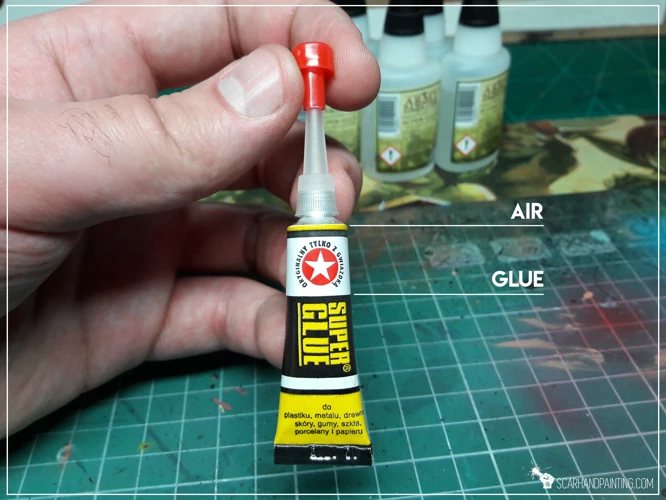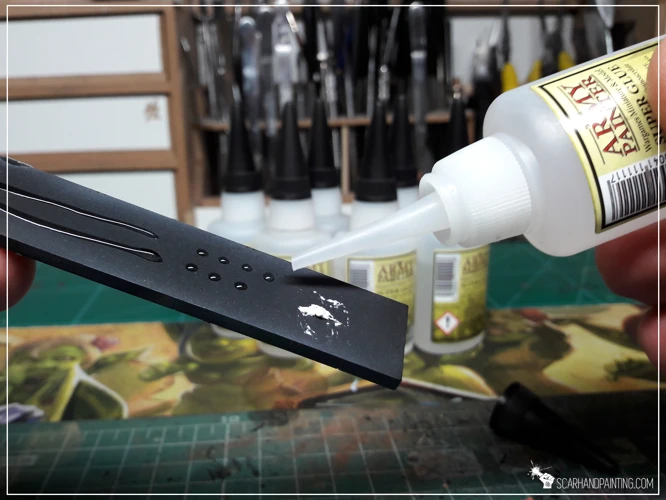Army Painter Plastic Glue Overview
Army Painter Plastic Glue is a specialized adhesive designed for the precise task of assembling plastic miniature models. As a vital component of any miniature painting supplies, this strong plastic adhesive ensures that the pieces of your models stay firmly together, allowing you to create detailed and durable wargaming and display pieces.
Benefits of Using Army Painter Plastic Glue
One of the primary advantages of using Army Painter Plastic Glue is its strength. The chemical formula is specifically tailored for plastic materials, creating a bond that is both resilient and long-lasting. Additionally, the precision applicator allows for controlled dispensing, minimizing mess and waste while enhancing the assembly experience.
Opening Plastic Glue
Step-by-Step Guide on How to Open Army Painter Plastic Glue
Opening plastic glue can be straightforward if approached correctly. To begin, hold the Army Painter Plastic Glue firmly in one hand. Locate the cap’s tip and carefully twist it in a counter-clockwise direction. As you unscrew the cap, be mindful to apply a consistent force to avoid any spillage upon opening.
Stuck Glue Bottle Fix: What to Do When Your Plastic Glue Won’t Open
Occasionally, you may encounter a stuck glue bottle. For a stuck glue bottle fix, gently apply heat around the cap using a hairdryer to soften any hardened glue. Once warmed, wrap a piece of cloth around the cap for better grip and try twisting it open again. If the cap remains stubborn, use a pair of pliers, but be cautious not to damage the container.
How to Use Plastic Glue for Miniatures
Preparing Your Miniatures for Gluing
Proper preparation of your miniatures is crucial for effective gluing. Begin by cleaning any molding lines or excess plastic from the parts to be joined. Ensure that the surfaces are dry and free of dust or oil, which can weaken the bond.
Applying Army Painter Plastic Glue
When applying Army Painter Plastic Glue, precision is key. Use the applicator to place a small amount of glue on one of the surfaces to be joined. Press the pieces together firmly and hold for a few seconds to allow the strong plastic adhesive to start setting.
Setting and Curing Time
The setting time for Army Painter Plastic Glue is relatively quick, with pieces able to hold together after a few seconds. However, for full strength, allow the adhesive to cure for 24 hours. During this time, refrain from handling the model excessively.
Glue for Miniatures: Tips and Techniques
Model Assembly Glue vs. Super Glue: When to Use Each
Model assembly glue is ideal for plastic models, as it melts and fuses the pieces together. In contrast, super glue is a general-purpose adhesive that is suitable for a wider variety of materials but does not create the same chemical bond with plastic.
Plastic Model Glue Tips for Enhanced Bonding
- Apply a thin layer of glue to avoid seepage.
- Hold the pieces together for a few seconds to ensure initial adhesion.
- Avoid moving the parts once joined until the glue has set.
Working with Wargaming Glue for Optimal Results
For wargaming models, it is essential to use a glue that can withstand handling and transport. Army Painter Plastic Glue offers durability that stands up to the rigors of gaming while also providing the precision needed for intricate assemblies.
Maintaining Your Miniature Painting Supplies
Storing Your Army Painter Plastic Glue
Proper storage extends the life of your Army Painter Plastic Glue. Keep the bottle upright in a cool, dry place and ensure the cap is securely fastened after each use to prevent the nozzle from clogging.
Cleaning Tips for Glue Applicators and Brushes
To maintain your applicators and brushes, clean them immediately after use with a suitable solvent. For brushes used with plastic glue, consider dedicating specific ones for glue application to avoid cross-contamination with paints.
Troubleshooting Common Glue Issues
Solving Weak Bonding Problems
If you encounter weak bonding, reassess the preparation stage. Ensure that the surfaces are clean and correctly aligned before applying the glue. A roughened surface can also increase the bonding strength.
Dealing with Excess Glue and Spillage
Excess glue can mar the appearance of your model. If spillage occurs, quickly and gently remove the excess with a cotton swab or a dedicated tool before the glue sets. For hardened glue, use a hobby knife to carefully scrape it away without damaging the model.
Conclusion
If you’re a hobbyist or DIY enthusiast, you know the importance of using the right adhesive for the job. For those working with miniatures, our guide on how to open Citadel Plastic Glue Thin can be incredibly helpful. Similarly, if you’re venturing into crafts involving fabric and canvas, don’t miss our tutorial on how to glue fabric to canvas. And for mixed media artists or anyone interested in combining unconventional materials, our instructions on how to glue aluminum foil to paper could be just what you need to bring your creative vision to life. Whether you’re assembling your army of miniatures or embarking on a unique crafting project, knowing how to work with different adhesives is key to achieving great results.
Final Thoughts on Strong Plastic Adhesive for Miniature Enthusiasts
In conclusion, Army Painter Plastic Glue is an indispensable tool for miniature enthusiasts. Following the proper opening, application, and storage procedures ensures the longevity and effectiveness of your miniature painting supplies. Remember these tips and techniques to achieve the best possible results with your models.


